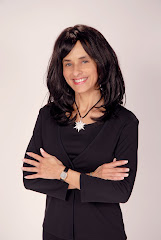Religions have updated their definitions of death since life support technology was invented. The verdict is still out in some cases. Here is an article discussing this matter:
A Washington, D.C., court will hear arguments on Wednesday in the case of Motl Brody, a 12-year-old Orthodox Jewish boy who was declared dead last week by hospital officials. Though the boy's brain has stopped functioning completely, drugs and a respirator are keeping his heart beating and his lungs inflating. According to his parents' strict religious beliefs, this means that Motl is still alive, and the family is therefore arguing to keep the boy on life support. How is death defined in other religions?
Usually, the same way it has traditionally been defined in all cultures: by a lack of vital signs. Most world religions lack a clear doctrinal statement that certifies when, exactly, the moment of death can be said to have occurred. For most of human history, there was no need for one since prior to the invention of life-support equipment, the absence of circulation or respiration was the only way to diagnose death. This remains the standard of death in most religions. By the early 1980s, however, the medical and legal community also began to adopt a second definition of death—the irreversible cessation of all brain functions—and some religious groups have updated their beliefs.
Jewish arguments both for and against accepting brain death can be found in the Talmud, the sprawling record of rabbinical discussions on law and ethics. Some strands of Talmudic law hold that those who have been decapitated or had their necks broken are considered dead, even if their bodies continue to move—an argument that many take as proof that total loss of brain function counts as death. Other scholars point to a section from the Babylonian Talmud, tractate Yoma, which states that if you come across a collapsed building on the Sabbath, you must uncover victims at least up to their noses to determine whether they are dead or alive, as "life manifests itself primarily through the nose as it is written: In whose nose was the breath of the spirit of life"—a reference to the Genesis story of the great flood. (For a longer discussion of the Jewish definition of death, see Chapter 12 in this book.)
Christians who ardently support the traditional circulatory-respiratory definition of death tend to be fundamentalists or evangelicals. They may point to Leviticus 17:11, which states that "the life of the flesh is in the blood," or Genesis 2:7, which describes how God "formed man of dust from the ground, and breathed into his nostrils the breath of life; and man became a living being." Most mainstream Protestant groups in the United States accept brain death as a valid criterion for death, as does the Roman Catholic Church, though that ruling is not without controversy.
In 1986, the Academy of Islamic Jurisprudence—a group of legal experts convened by the Organization of the Islamic Conference—issued an opinion stating that a person should be considered legally dead when either "complete cessation of the heart or respiration occurs" or "complete cessation of all functions of the brain occurs." In both cases, "expert physicians" must ascertain that the condition is irreversible. However, the academy's statement was merely a recommendation to member nations, not a binding resolution, and the question remains an open one for many Muslims.
In 2006, the family of a Buddhist man in Boston who had been declared legally brain-dead argued that, because his heart was still beating, his spirit and consciousness still lingered and that removing him from life support would be akin to killing him. In a Boston Globe article about the case, a professor of Buddhism explained that, within Tibetan Buddhism, a person has multiple levels of consciousness, which may or may not correspond with brain activity.
Got a question about today's news? Ask the Explainer.
Explainer thanks Courtney Campbell of Oregon State University, Fred Rosner of the Mount Sinai School of Medicine, and Stuart Youngner of Case Western Reserve University.
Nina Shen Rastogi is a writer and editor in Brooklyn, N.Y.
Article URL: http://www.slate.com/id/2204242/
=0)document.write(unescape('%3C')+'\!-'+'-')
//-->
Copyright 2008 Washingtonpost.Newsweek Interactive Co. LLC
Thursday, November 20, 2008
How do different religions define death?
Labels:
Global,
Global Ways,
international,
Karla Scott,
religions
Subscribe to:
Post Comments (Atom)






.jpg)
.jpg)




No comments:
Post a Comment